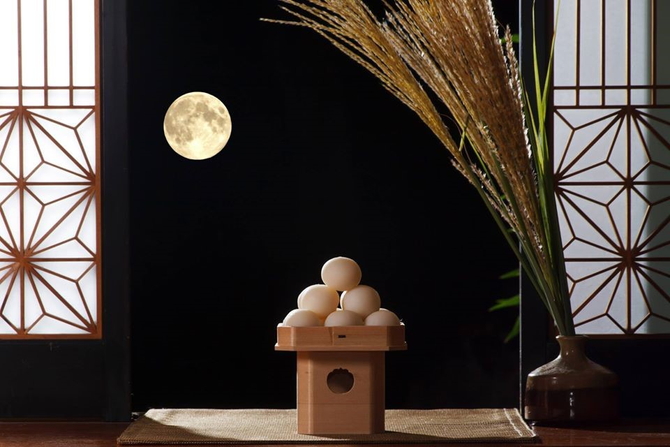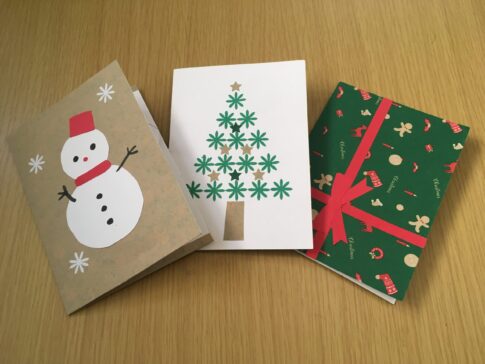お月見(Tsukimi)に関連する英単語をいくつか紹介しますね。
- Moon Viewing – お月見
- Harvest Moon – 収穫の月(特にお月見の時期の満月)
- Mooncake – 月餅(中国や日本でお月見の時期に食べるお菓子)
- Chrysanthemum – 菊(お月見の時期に飾る花)
- Offerings – 供え物(お月見の際に月に捧げる食べ物や花)
- Full Moon – 満月
- Autumn Equinox – 秋分の日(お月見の時期と重なることが多い)
- Traditional Japanese Festival – 伝統的な日本の祭り(お月見もその一つ)
これらの単語が、お月見の文化を説明するのに役立つと思います!
お月見のことを英語で説明できるようになろう!
お月見(Tsukimi): A traditional Japanese festival where people celebrate the full moon.
お月見: 日本の伝統的な祭りで、満月を祝います。
Full Moon(満月): People look at the full moon during this festival. It usually happens in September or October.
満月: この祭りの間に満月を見ます。通常、9月または10月に行われます。
Offerings(供え物): They place special food outside, like mooncakes(月餅) and dumplings(団子), to celebrate the moon.
供え物: 月を祝うために、外に特別な食べ物(例えば、月餅や団子)を置きます。
Chrysanthemums(菊): People use chrysanthemums to decorate and honor the moon.
菊: 月を飾り、敬うために菊を使います。
Autumn(秋): This festival takes place in autumn, a beautiful season.
秋: この祭りは秋に行われ、美しい季節です。
Tsukimi is a time to enjoy the beauty of the moon and give thanks for the harvest.
お月見: 月の美しさを楽しみ、収穫に感謝する時期です。
お月見のことを話す上で使える英語フレーズ
お月見について話すときに使える英語フレーズをいくつか紹介しますね。
- “Tsukimi is a traditional Japanese festival.”
- お月見は日本の伝統的な祭りです。
- “During Tsukimi, people celebrate the full moon.”
- お月見の間、人々は満月を祝います。
- “The festival usually takes place in September or October.”
- この祭りは通常、9月または10月に行われます。
- “People often enjoy mooncakes and dumplings during Tsukimi.”
- お月見の時には、月餅や団子を楽しむことがよくあります。
- “Chrysanthemums are used for decoration during the festival.”
- 菊は祭りの飾り付けに使われます。
- “Tsukimi is a time to appreciate the beauty of the moon.”
- お月見は月の美しさを楽しむ時期です。
- “The festival also marks the harvest season.”
- この祭りは収穫の季節も示します。
- “Families gather to share food and admire the moon.”
- 家族が集まり、食べ物を共有しながら月を鑑賞します。
- “Tsukimi is celebrated with various traditional activities.”
- お月見は様々な伝統的な活動で祝われます。
- “People make special offerings to honor the moon.”
- 月を敬うために特別な供え物を作ります。
これらのフレーズを使うと、お月見についての会話がスムーズに進むと思います。
お月見の歴史
お月見の歴史を日本語と英語で併記して説明しますね。
お月見(Tsukimi): お月見は、日本の伝統的な祭りで、月を祝うための行事です。この祭りは、古代中国から日本に伝わり、長い歴史があります。
Tsukimi: Tsukimi is a traditional Japanese festival where people celebrate the moon. This festival has a long history, originating from ancient China.
起源(Origin): お月見の起源は、古代中国の「中秋の名月(Mid-Autumn Festival)」にさかのぼります。中国では、この祭りが秋の満月を祝う行事として行われていました。
Origin: The origin of Tsukimi traces back to the ancient Chinese festival known as the Mid-Autumn Festival. In China, this festival was celebrated to honor the full moon in autumn.
日本への伝来(Introduction to Japan): この祭りは、日本に伝わり、平安時代(794-1185年)にはすでに行われていたと言われています。日本では、月の美しさを楽しむことが重要な文化となり、次第に日本独自の形式が形成されました。
Introduction to Japan: The festival was introduced to Japan and is said to have been celebrated as early as the Heian period (794-1185). In Japan, enjoying the beauty of the moon became an important cultural practice, and a unique Japanese style of the festival developed over time.
歴史的背景(Historical Background): お月見は、秋の収穫を祝う祭りとしても知られています。古代日本では、農作物の収穫を感謝する意味も込めて、満月を観賞し、供え物を捧げていました。
Historical Background: Tsukimi is also known as a festival to celebrate the autumn harvest. In ancient Japan, people would view the full moon and make offerings to express gratitude for the harvest.
現代のお月見(Modern Tsukimi): 現在では、秋の満月を楽しむための行事として、月見団子や月餅などの特別な食べ物を用意し、家族や友人とともに過ごすことが一般的です。
Modern Tsukimi: Today, Tsukimi is celebrated by enjoying the autumn full moon. People prepare special foods like mooncakes and dumplings and spend time with family and friends.
このように、日本のお月見の歴史を理解するのに役立つ情報です。







お月見に関する英単語